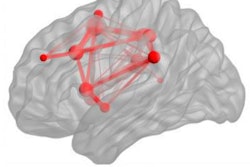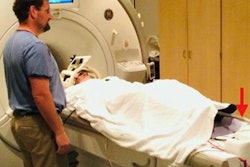
PET imaging has found a link between heart disease risk and post-traumatic stress disorder (PTSD) in Vietnam War veterans, according to a study published September 27 in Biological Psychiatry.
A U.S. team led by researchers at Emory University in Atlanta performed cardiac PET imaging tests in groups with and without PTSD. They found more than 70% of individuals with PTSD showed signs of impaired heart function.
"In a sample of adult twin military veterans who were assessed twice approximately 12 years apart, we found that PTSD was associated with reduced [myocardial flow reserve], a measure of microcirculatory function," wrote epidemiologist and cardiologist Dr. Viola Vaccariono, PhD, and colleagues.
The finding fills a significant gap in evidence concerning the long-term cardiovascular consequences of PTSD and should help in efforts for risk prediction and treatment, the team wrote.
PTSD is a chronic disabling psychiatric condition triggered by traumatic events. Military personnel exposed to combat are especially affected by PTSD. The lifetime prevalence of PTSD in veterans who served in Southeast Asia during the Vietnam War is 15% to 19%, and many continue to have PTSD decades after the war. PTSD is even more prevalent in service members from the recent Iraq and Afghanistan conflicts.
Preliminary research has suggested a possible link between PTSD and heart disease due to coronary microvascular dysfunction, which can reduce blood flow in small blood vessels and damage the heart, the authors wrote.
PET myocardial perfusion imaging (MPI) is a common diagnostic test for detecting abnormal microvascular function. The exam measures blood flow in milliliters per minute per gram of tissue. Ultimately, MPI may catch heart disease before patients develop clinical symptoms due to narrowing of the arteries.
The link between PTSD and ischemic heart disease remains elusive, however, due to a shortage of longitudinal patient studies and objective measures, the researchers wrote.
In 2013, Vaccario and colleagues published an initial study after the first round of PET imaging. In 281 middle-aged male twins (562 patients total), they found that signs of coronary heart disease were more than double in participants with PTSD (22.6%) compared with those without PTSD (8.9%).
A study in twins allowed the researchers to control by design for familial confounding, since twin siblings share genes (50%, on average, if dizygotic, and all if monozygotic), maternal factors, and early familial environment.
Although compelling, that study was limited by the lack of longitudinal data for both PET imaging and PTSD, the authors noted.
In the current study, Vaccario and colleagues followed up and examined the twins over a decade after their initial assessment. Participants at baseline were selected from the Vietnam Era Twin Registry, a large national sample of adult male twins who served on active duty during the Vietnam War.
Patients were split into groups where at least one of a twin pair had PTSD or major depression compared to twin pairs without these conditions. The mean age was 68 years across all groups. A total of 122 pairs of twins underwent a second in-person evaluation.
Overall, 80% of twins had no or minimal obstructive coronary disease. Yet, myocardial flow reserve was depressed in twins with PTSD, and was progressively lower across groups with no PTSD (2.13), late-onset PTSD (1.97), and longstanding PTSD (1.93).
A low myocardial flow reserve (a ratio < 2.0) was present in 40% of twins without PTSD, 56% in late-onset PTSD, and 72% in patients with longstanding PTSD. In addition, associations persisted in multivariable analysis when examining changes in myocardial flow reserve between the first and second visits, and within twin pairs, the researchers found. Results were similar by zygosity.
In addition to the strength of a matched twin design, the study is the only investigation to date to examine longitudinal changes in both PTSD and objective measures of myocardial perfusion and blood flow, the authors noted.
"Longitudinally, PTSD is associated with reduced coronary microcirculatory function and greater deterioration over time. The association is especially noted among twins with chronic, longstanding PTSD, and is not confounded by shared environmental or genetic factors," the team concluded.





















